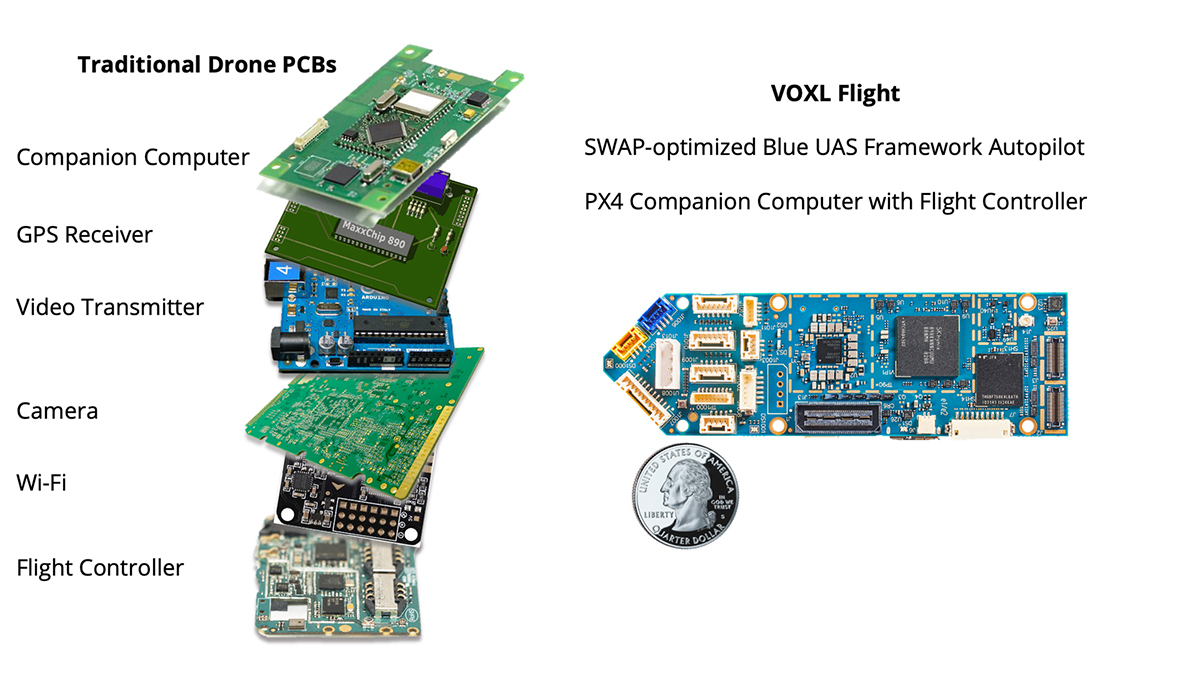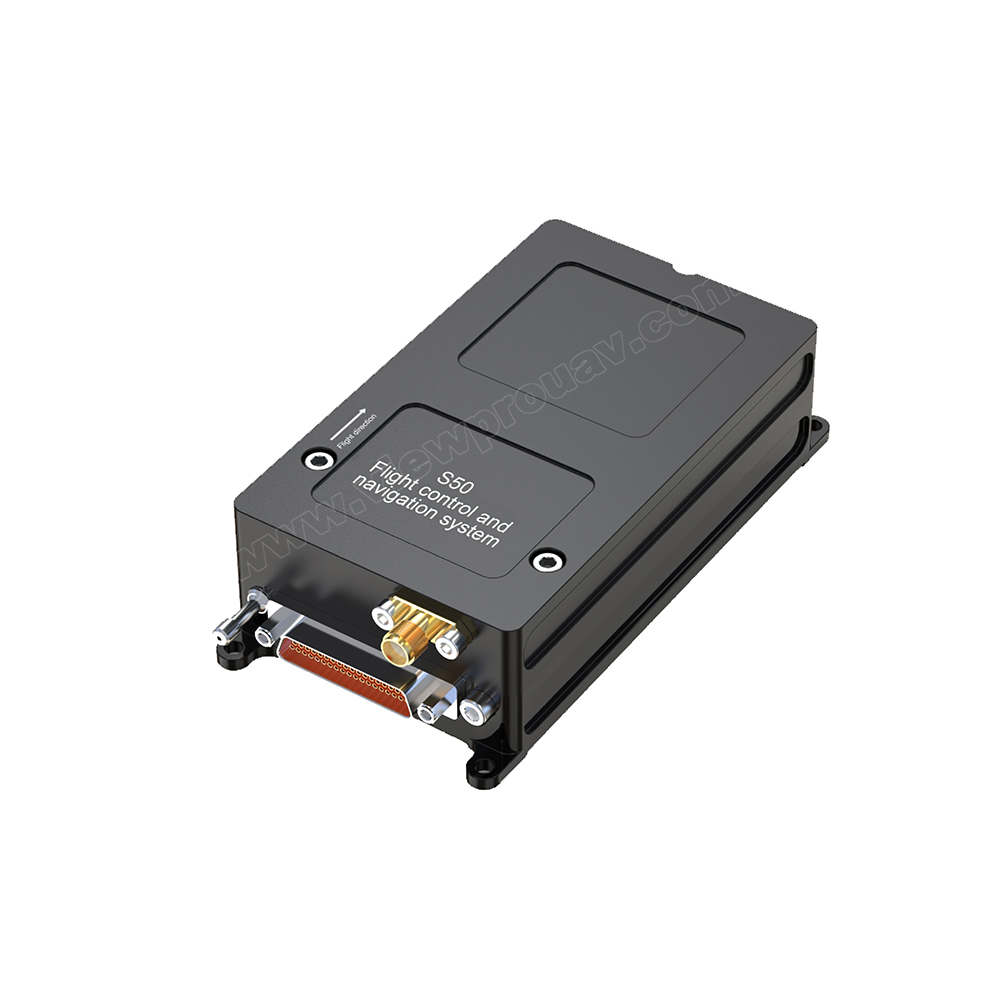Boost Drone Performance with SparkNavi Drone Flight Controller and GNSS/INS Made in Taiwan
Boost Drone Performance with SparkNavi Drone Flight Controller and GNSS/INS Made in Taiwan
Blog Article
Discovering the Role of Drone Flight Controllers in Enhancing Trip Security and Navigation Effectiveness
The improvement of drone modern technology has actually considerably increased the significance of trip controllers, which offer as the brain of these airborne automobiles. By incorporating real-time information from a variety of sensors, flight controllers improve trip security and navigating efficiency, ensuring that drones can run smoothly even in complex settings.

Comprehending Flight Controllers
Flight controllers are indispensable components in the performance of drones, acting as the minds that stabilize and take care of trip operations. These innovative tools process data from different sensing units, including accelerometers, gyroscopes, and GPS, to make sure that the drone preserves its intended flight course. The trip controller analyzes this data and executes commands based on pre-defined formulas, allowing the drone to react to ecological changes, such as wind or barriers.
The main function of a flight controller is to preserve security during trip. It attains this by making real-time adjustments to the drone's electric motors and control surfaces, guaranteeing equilibrium and control. In addition, contemporary flight controllers incorporate innovative attributes such as waypoint navigation, enabling automated flight paths and improved functional effectiveness.
Recognizing the style of flight controllers is essential for both hobbyists and experts. They usually are composed of a microcontroller, firmware, and numerous user interfaces for sensor input and communication. As technology breakthroughs, trip controllers have ended up being extra qualified and portable, integrating expert system to adapt and improve decision-making processes to intricate flight circumstances. This evolution indicates a pivotal advancement in the drone sector, leading the way for extra advanced applications and more secure procedures.
Trick Components of Flight Stability
Achieving optimal trip stability in drones relies on several vital parts that work in concert to make sure regulated and smooth procedures. Central to this security is the flight controller itself, which refines data from numerous sensors to maintain the wanted flight perspective. This includes accelerometers and gyroscopes that measure movement and alignment, permitting for real-time adjustments to the drone's setting.
Another important element is the digital rate controllers (ESCs), which manage the power delivered to the electric motors. By finely tuning electric motor rates in response to flight controller commands, ESCs assist keep balance and counteract disruptions created by wind or abrupt activities.
Additionally, the design of the drone's frame plays an essential function in trip stability. A well-structured frame decreases vibrations and enhances the total wind resistant account, contributing to smoother trip qualities. Finally, the combination of advanced formulas within the flight controller help in anticipating modifications, ensuring a responsive and versatile flight experience.
With each other, these elements form a cohesive system that boosts a drone's security, enabling specific handling and improved efficiency in numerous flight conditions.
Navigating Efficiency Strategies
Efficiency in navigation is necessary for optimizing drone procedures, particularly in intricate atmospheres. Effective navigation methods enhance the capability of drones to go across challenging surfaces and prevent obstacles, thus improving operational effectiveness and security.
One famous strategy is the execution of innovative GPS and inertial measurement units (IMUs) that provide exact area tracking and positioning data. These innovations allow drones to calculate optimal trip courses in real-time, taking into consideration different aspects such as wind problems and possible barriers.
An additional method involves using algorithms for course planning and optimization. Algorithms such as A * and Dijkstra's formula can be released to determine one of the most effective course while minimizing power intake and trip time. In addition, incorporating machine learning models can enable drones to adaptively pick up from their settings, improving navigating capabilities through experience.

Effect On Autonomous Drones
The assimilation of innovative navigation techniques has greatly transformed the capabilities of independent drones, enabling them to run with better freedom and accuracy. SparkNavi drone flight controller and GNSS/INS made in taiwan. These enhancements are largely associated to advanced flight controllers that utilize real-time data handling and sensing unit blend, permitting drones to navigate intricate environments effortlessly
The impact on autonomous drones prolongs beyond simple navigating; it incorporates enhanced challenge evasion, boosted stability throughout vibrant conditions, and enhanced objective reliability. By leveraging algorithms that incorporate artificial intelligence and expert system, drones can adjust to altering situations, making notified choices that enhance their flight courses while lessening threats.
In addition, the implementation of durable flight controllers has assisted in the implementation of complicated tasks, such as aerial assessments, distribution services, and agricultural surveillance, with very little human intervention. This ability not only streamlines procedures yet additionally lowers human error, consequently boosting overall safety.
Consequently, the functional range of independent drones has actually broadened significantly, making them essential devices in different markets. Their capacity to carry out effectively in diverse situations underscores the vital duty that progressed trip controllers play in forming the future of unmanned aerial systems.
Future Trends in Flight Control
Regularly, advancements in flight control modern technology are positioned to redefine the landscape of drone procedures in the coming years. Arising fads show a substantial shift towards enhanced expert system (AI) integration, making it possible for trip controllers to refine real-time information extra effectively. This evolution will certainly facilitate improved decision-making abilities, enabling drones to adjust to dynamic environmental conditions autonomously.
Furthermore, the execution of machine learning formulas is expected to boost predictive upkeep, therefore decreasing downtime and extending the lifecycle of drone components. This aggressive technique to upkeep will be vital as drone applications broaden throughout different industries, from farming to logistics.

.jpg)
Finally, advancements in safe and secure communication procedures will certainly deal with safety and governing concerns, guaranteeing that drones can run perfectly in busy airspaces (SparkNavi drone flight controller and GNSS/INS made in taiwan). Collectively, these fads point towards a future where flight control systems are not only smarter and much more additionally qualified yet effective of running safely in a significantly incorporated airspace
Final Thought
In conclusion, drone trip controllers are integral to improving flight security and navigating efficiency through the advanced processing of sensor information. By keeping optimum flight attitudes and utilizing sophisticated algorithms for course optimization and obstacle avoidance, these controllers dramatically add to the autonomy and functional safety of drones. As technology continues to progress, further advancements in trip control systems are anticipated, assuring enhanced efficiency and expanded abilities in the realm of unmanned aerial lorries.
By incorporating real-time data from a range of sensors, trip reference controllers improve trip stability and navigation effectiveness, ensuring that drones can operate smoothly even in intricate atmospheres.Flight controllers are important parts in the performance of drones, offering as the minds that stabilize and handle flight operations. In addition, modern-day flight controllers integrate advanced attributes such as waypoint navigating, enabling for automated trip courses and improved functional effectiveness.
Central to this stability is the flight controller itself, which refines data from different sensors to keep the wanted trip mindset.In verdict, drone flight controllers are important to boosting trip security and navigation performance through the sophisticated processing of sensing unit data.
Report this page